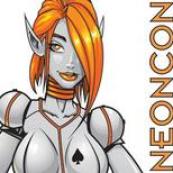 GM: Josh Roby
GM: Josh Roby
Players: Sean, Ryan, Will, and Tim
System: Vicious Crucible
Discussion of this game was done pretty well in the This Just in From Neoncon show (http://www.thisjustinfromneoncon.com/?p=20)
Ryan and Josh are making this game that, as the podcast indicates is very “situation” first. They come up with a killer situation (in this case a raiding party attacking), add in a relationship map (giving all the characters meaningful and difficult interactions) and add some complications and boom, you’ve got a good story and a system mapped to tell that story well.
John Harper did this with Lady Blackbird and I’m totally into this school of game design. Figure out what you want to do in the game and then make a game that will do that well. If anything I think the currency system in Vicious Crucible adds even more to the game than Blackbird did, as the currency is quickly earned and spent, something I really dig.
We played out two conflicts, one physical and one social. One extended, one simple. One GM/situation initiated, one player initiated. One where we gamed the system to “win” and one where we gamed it to earn currency. So, in just two conflicts, we still got to play out plenty of permutations.
What rocked
The “keys” Josh and Ryan have developed is the system that I always wanted Virtue/Vice to be in World of Darkness. If I do these specific things, I get rewarded. And I can change these specific things when I think my character is ready to move on. It’s simple, only it’s not. Games have been trying to figure out how to reward people for specific behaviors that both a) are fun for the player and b) reinforce the themes of the game for ages. Many do it well, more do it poorly. Vicious Crucible hits it on the head.
The characters are interesting and compelling. I immediately found myself attached to several of the characters and to their interesting relationships (forbidden love, you let my brother die, etc).
The game is quite gamey without being meaninglessly crunchy. I can’t really explain what that means, but if you’ve played with me you’ve probably got a good idea.
What could have improved
I’m not sold on the resolution system yet. It definitely incorporates elements I like (like allowing the players to hose themselves for a currency, ala traits in Mouseguard) but isn’t finished. The choice of what die to put forward and then how to maneuver it (and when people can maneuver them) feels like it needs to be more prescribed (like phases in magic), as I wasn’t sure when things should happen. Also, it wasn’t really clear if a low roll should be narrated as a failure or as a partial success that may or may not be negated. For instance, if we’re fighting and I have 2 and you’ve got a 4, I think I’ve lost that beat, but it’s actually more beneficial to narrate an attack, as you may not defend. On that note the “incoming wound” mechanic seemed a little awkward. I think maybe a token should be used to represent it.
I didn’t see the vicious crucible, that is the really hard choice every character would have to make. I’m sure it was coming, but I didn’t see it. We got a hint in the social conflict, but nothing that was showing a character making a truly grueling choice. I’d like to see what happens there because I want to know if the game has a way of preventing players from stalling or trying to weasel out of the choice.